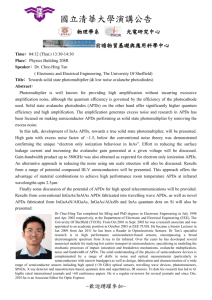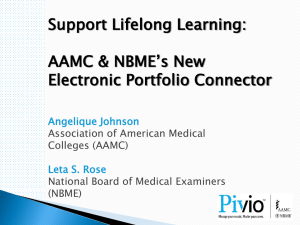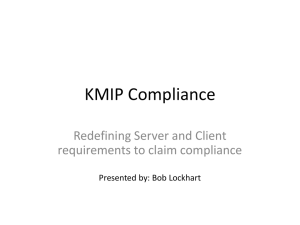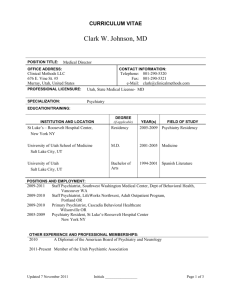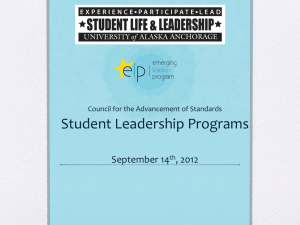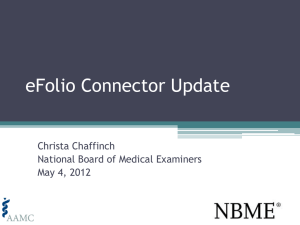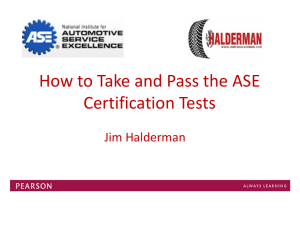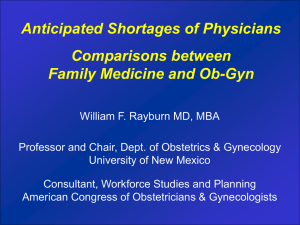M4 Interest Group- 2014 - Association for Surgical Education
advertisement
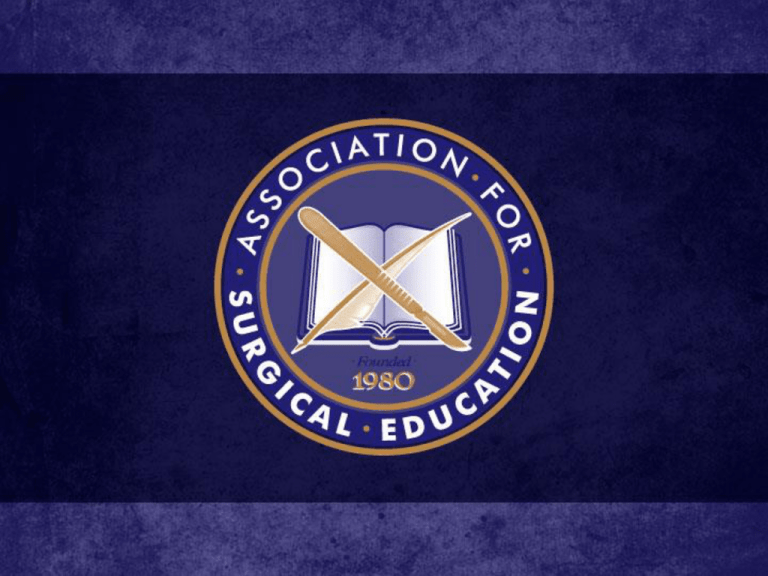
M4 Interest Group- 2014 Nabil Issa, MD- Director, Surgery Subinternship Northwestern University Feinberg School of Medicine What we’ll talk about 1. The professional continuum & surgical sub-I 2. The sub-I in literature 3. Position paper- recommendation threads The Professional Continuum & Surgical Subinternship AAMC: Entrustable Professional Activities (EPA) Residents M4 M3 M1-2 The surgery sub I in literature Still Not Much! What competencies are deficient among surgical interns in particular? Two studies have explored this topic: I. ACS/APDS/ASE National Preparatory Surgery Curriculum II. Medical student subinternships in surgery: characterization and needs assessment ACS/APDS/ASE National Preparatory Surgery Curriculum Needs Assessment- Main findings: 1. Anxiety /deficient technical skills 2. Managing multiple simultaneous demands 3. Managing critical/unstable patients 4. Management of Post-op conditions 5. Difficult communications Medical student subinternships in surgery: characterization and needs assessment Findings Subinternship curriculum elements perceived benefit to student education Literature Synthesis What students want is more organized educational activities! 1. 2. 3. 4. 5. 6. 7. Formal objectives. Reading list. Review common call problems. Procedures laboratory. Dedicated time with faculty. Direct responsibility. Autonomy. Position Paper M4- Interest group: Alan Ladd, Steven Goldin, Anne Lidor, Nabil Issa Conceptual Framework AAMC: EPA M3 National Curriculum ACS/APDS/ASE Boot Camp M3 M1-2 Residents M4 AAMC: Entrustable Professional Activities (EPA) Residents M4 M3 M1-2 Recommendation Threads 1. 2. 3. 4. 5. 6. Administrative Structure Goals and Objectives Curricular elements Instructional strategies Assessment tools Clerkship evaluation Administrative Structure M3 ≠ M4 Administrative Structure M3 ≠ M4 M3 Director M4 Director Coordinator Coordinator Administrative Structure M3 ≠ M4 M3 Director M4 Director Coordinator Administrative Structure M3 ≠ M4 M3/M4 Director Coordinator Coordinator Role of Sub-I Director 1. 2. 3. 4. 5. 6. 7. Create curriculum: M3 → Residency Explicit goals & objectives Comprehensive orientation Choice of clinical rotations Petition school for resources Protected educational time Career coach Role of Sub-I Coordinator 1. Coordinating educational activities 2. Administrative link to school and department policies, rules and announcements 3. Documentation: student and rotation activities 4. Weekly follow up e-mails to enforce task completion 5. Administrative timelines Curricular Elements Goals and Objectives 1. 2. 3. 4. 5. 6. 7. 8. H&P skills: Concise & pertinent. Clear progress notes. Advanced clinical reasoning. Manage common surgical problems. Perform common bedside procedures. Patient handoffs during transitions of care. Professional communications. Utilize informatics. Instructional Strategies 1. 2. 3. 4. 5. 6. Direct observations: H&P/DDx/management plans Professor rounds: case-based discussions Mock pages: common problems Web-based modules: SBAR/Handoffs Technical skills lab: common bedside procedures Independent reading: pt. safety/quality controls/ evidence-based medicine 7. End of rotation project or assay. Assessment Tools Composite Scoring: 1. Appraisals of clinical performance 2. Performance on mock pages 3. Participation in discussion during Prof. rounds 4. Procedural competence 5. Professionalism: timely completion of tasks Clerkship Evaluation • Student feedback • Faculty feedback • Monitor national trends: AAMC, ASE, ACS, APDS Position Paper Update First draft completed Manuscript Revisions AAMC: EPA M3 National Curriculum ACS/APDS/ASE BootCamp Residents M4 M3 M1-2 QUESTIONS
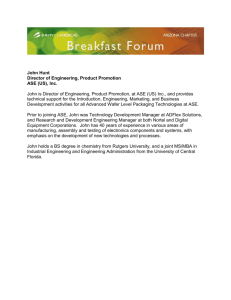
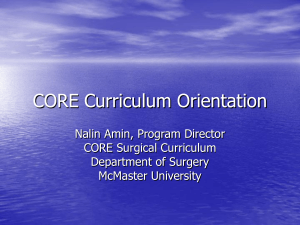
![Faculty Forward [PDF]](http://s2.studylib.net/store/data/005260716_1-e64c3a84465fecffce46203374b03bc3-300x300.png)
